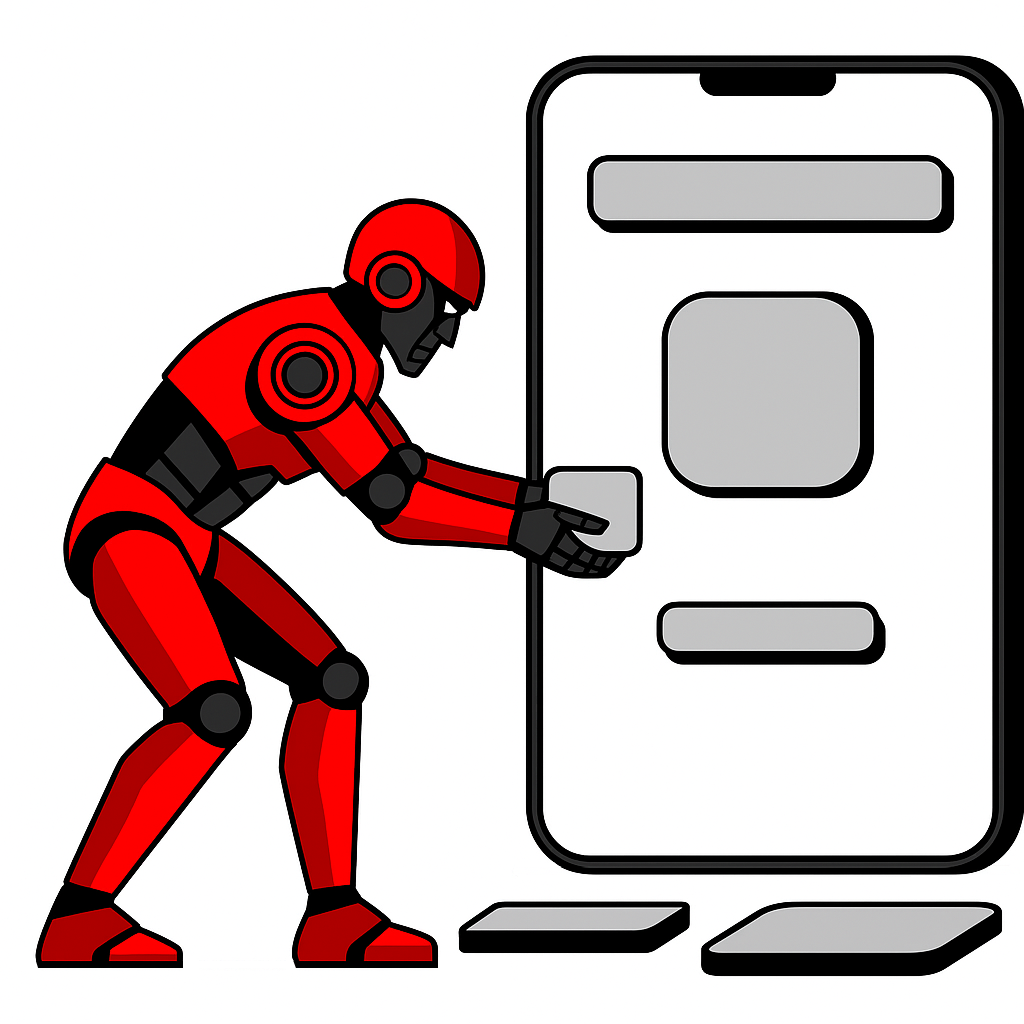App Development
Deution delivers strategy-driven App Development with clean architecture, CI/CD, security, and measurable outcomes. Join our clients and see the Development Revolution in action.

What is App Development and why does it matter?
App Development turns strategy into working software that solves real problems. It connects users to value through clear flows, robust code, and measurable outcomes. At Deution, we start with business goals. Then we map user journeys and translate them into small, testable increments. This reduces risk and accelerates learning. Moreover, it keeps budgets under control. Because markets shift, we design for change. Therefore, features can evolve without heavy rework. Additionally, we plan for analytics from day one. As a result, decisions stay data driven and teams move with confidence.
How does Deution approach App Development for speed and quality?
We blend product thinking with engineering discipline. First, we run discovery to align business, user, and tech. Next, we create a delivery roadmap with small milestones. Consequently, progress stays visible and predictable. Our engineers pair automated tests with clean architecture. Therefore, defects drop and release cadence improves. Furthermore, we use CI/CD to ship safely, often, and without drama. We document decisions in plain language. Additionally, we measure cycle time, lead time, and deployment frequency. In short, we build fast, learn fast, and scale what works.
What does App Development cost and timeline look like?
Cost depends on scope, complexity, integrations, and compliance needs. As a guide, a focused MVP takes 6–12 weeks with a lean team. Meanwhile, mid-sized products often need 3–6 months. Enterprise platforms may span several quarters. To control spend, we break work into fixed outcomes. Then we set clear acceptance criteria and a capped budget per outcome. Moreover, we publish weekly burn and value delivered. Therefore, you see exactly where money goes. Additionally, we run time-boxed spikes for unknowns. That reduces surprises and clarifies estimates early.
Small apps
Small Apps focus on a narrow job with a tight scope. Think proof-of-concepts, internal tools, or utilities. We move from discovery to release quickly. Moreover, we reuse components to compress timelines. Additionally, we avoid over-engineering and keep hosting simple. Therefore, deployment costs stay low and ROI appears fast. Typical efforts include basic auth, a clean UI, and one or two integrations. As a result, these apps validate ideas and unlock immediate wins.
Commercial Apps
Commercial Apps power core processes. Examples include customer portals, order management, and field operations. We design for reliability and role-based access. Moreover, we integrate with CRMs, ERPs, and analytics. Additionally, we automate testing to protect flows. Therefore, releases remain frequent without breaking work. We track KPIs like cycle time, error rate, and adoption. Consequently, stakeholders see value in numbers and stories. These apps often grow with the business and demand clear roadmaps.
Systems Apps
Systems Apps and Platforms orchestrate many moving parts. They expose APIs, manage data pipelines. We use modular architecture and event-driven patterns where suitable. Moreover, we design for multi-tenant security and strong observability. Additionally, we plan for zero-downtime migrations and regional failover. Therefore, uptime targets stay realistic and auditable. We document contracts and SLAs clearly. Consequently, teams can build on the platform without fear, and the ecosystem expands.
Our methodology: from strategy to scale
We follow a six-step loop. Discover, define, design, deliver, measure, and refine. During discovery, we align goals and risks. During definition, we write lean specs and story maps. Then design turns flows into clickable prototypes. Delivery ships vertical slices behind feature flags. Measurement tracks activation, retention, and performance. Finally, refinement removes friction and expands value. Importantly, each step produces artifacts you can reuse. Moreover, the loop repeats without stopping the line. Consequently, the product improves while users stay served.
Tech stack and architecture choices
We select stacks to match constraints, not trends. For mobile, we weigh native iOS and Android against cross-platform options like React Native and Flutter. For web, we favor modern frameworks with SSR for speed. Additionally, we adopt API-first designs with REST or GraphQL. Data needs drive database choices. Therefore, transactional flows may use Postgres, while analytics may use warehouses. Moreover, we design loosely coupled services where it pays off. However, we keep monoliths when they move faster. As a result, architecture fits the job and the timeline.
Security, compliance, and performance by design
Security is part of delivery, not an afterthought. We apply least privilege, encrypted secrets, and SAST/DAST in CI. Moreover, we threat model high-risk features before coding. Consequently, exposure drops. For compliance, we map controls to standards like SOC 2 or HIPAA when required. Additionally, we plan audit trails and data lifecycle early. Performance starts with budgets. Therefore, we set targets for TTFB, FID, and p95 latency. Then we test under load and trace hotspots. As a result, the product stays fast as usage grows.
Product design that converts
Good UX reduces support costs and increases revenue. We run structured interviews and quick usability tests. Moreover, we design with accessibility in mind from the start. Clear copy and consistent patterns reduce cognitive load. Additionally, we use design tokens to keep interfaces coherent across platforms. Micro-interactions guide users without clutter. Therefore, onboarding feels natural and task completion rises. We validate designs with analytics and session replays. Consequently, improvements are guided by evidence, not guesses.
Integration, data, and analytics
Most products live in a larger ecosystem. We integrate with payment gateways, CRMs, ERPs, and messaging platforms. Moreover, we build webhooks and event streams to keep systems in sync. For data, we design schemas for reporting and ML readiness. Additionally, we add observability with logs, metrics, and traces. Therefore, incidents get triaged quickly and root causes stay clear. We implement privacy controls and role-based access. As a result, teams see the right data at the right time.
Maintenance, support, and continuous delivery
After launch, momentum matters. We automate backups, dependency checks, and security patches. Moreover, we maintain an SLO-driven on-call process. Error budgets inform release pace. Consequently, quality and speed stay balanced. Additionally, we schedule quarterly architecture reviews to prevent drift. We publish change logs users can understand. Therefore, upgrades become routine instead of painful. Support workflows close the loop between tickets and roadmap. As a result, the product improves where it counts.
Visit Deution – Development Revolution
You can see our work and talk to the team on site. Moreover, in-person sessions compress weeks of remote back-and-forth into hours. Schedule a visit and review a live roadmap, a working prototype, or a performance dashboard. Additionally, you can meet the engineers and designers shipping your product. To plan your visit, open our location here: Open on Google Maps. Then bring your questions. We will bring the data.
Pricing models and engagement options
We offer three models. Outcome-based, team-based, and hybrid. Outcome-based work fits MVPs or critical features. Therefore, you get a fixed price for a defined result. Team-based suits ongoing programs. Moreover, it scales up or down as priorities shift. Hybrid blends a core team with fixed outcomes for high-risk work. Additionally, we align incentives with delivery metrics. Consequently, the focus stays on shipped value, not hours.
How do you ensure code quality and reliability?
We enforce branch protections, code reviews, and automated tests. Moreover, we measure mutation coverage for depth. Additionally, we run static analysis and security scans in CI. Therefore, defects surface early and releases stay stable.
Which platforms do you support?
We support iOS and Android. Additionally, we deliver desktop builds when needed. Moreover, we design for responsive layouts and offline-first flows. Therefore, users get a consistent experience across devices.
How do you handle scalability?
We profile early and test under load. Moreover, we use horizontal scaling, queues, and caches. Additionally, we add rate limits and circuit breakers. Consequently, the system degrades gracefully under stress.
Do you work with startups and enterprises?
Yes. We tailor governance to context. Startups get speed with guardrails. Enterprises get compliance and integration depth. Moreover, both get clear reporting and accountable delivery.
How do you estimate features?
We estimate by slicing. Moreover, we size effort using reference stories and historical throughput. Additionally, we spike unknowns and cap risk with time boxes. Therefore, estimates stay realistic and useful.
What happens after launch?
We monitor stability, speed, and user behavior. Moreover, we run A/B tests to verify improvements. Additionally, we prioritize fixes and enhancements by impact. Consequently, the product keeps compounding value.
Can you help with app marketing and ASO?
Yes. We run ASO research, keyword optimization, store listing A/B tests, and analytics setup. We plan launch campaigns and track conversion, retention, and ROAS.
F A Q
Frequently Asked Questions

It transforms strategy into working software with measurable value. Deution maps journeys into small, testable increments, designs for change, and enables data-driven decisions from day one.
Discovery aligns goals. A roadmap ships in small milestones with clean architecture and automated tests. CI/CD and delivery metrics keep releases frequent, safe, and predictable.
MVPs take 6–12 weeks; mid-sized apps 3–6 months; platforms longer. We slice outcomes with clear criteria, capped budgets, weekly reporting, and time-boxed spikes for unknowns.
Branch protections, reviews, automated tests, static analysis, and security scans in CI surface defects early and keep releases stable.
We support iOS and Android. Responsive, offline-first design delivers a consistent experience across devices.
We profile early and load-test. Horizontal scaling, queues, caches, rate limits, and circuit breakers ensure performance and graceful degradation under stress.
Yes. Startups get speed with guardrails. Enterprises get compliance and integration depth. Both get clear reporting and accountable delivery.
We estimate by slicing and reference stories. Historical throughput and time-boxed spikes for unknowns keep estimates realistic and useful.
We monitor stability, speed, and behavior. A/B tests verify improvements, and we prioritize fixes and enhancements by impact to compound value after launch.
Yes. We run ASO research, keyword optimization, store listing A/B tests, and analytics setup. We plan launch campaigns and track conversion, retention, and ROAS.